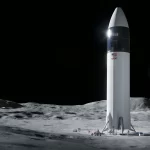Key takeaways
- Pioneering Duration: The GUSTO mission soared above the South Pole for an unprecedented 57 days, setting a new benchmark for NASA’s extended-duration balloon missions and showcasing the potential for prolonged scientific exploration.
- Cutting-edge Payloads: NASA’s Long Duration Balloon program offers researchers the opportunity to deploy state-of-the-art instruments to the edge of space, allowing for groundbreaking observations of the cosmos at a fraction of the cost of traditional orbital missions.
- Interstellar Insight: By measuring emissions from carbon, oxygen, and nitrogen between stars, GUSTO contributes to a deeper understanding of the Milky Way’s interstellar gas lifecycle, shedding light on fundamental processes within our galaxy.
- Collaborative Success: The triumph of the GUSTO mission underscores the collaborative efforts of various stakeholders, including the operations team, balloon manufacturer, support staff in Antarctica, and NASA’s Mission Management team, highlighting the importance of cooperation in achieving scientific milestones.
- Safe Descent: GUSTO’s mission concluded with a safe descent and touchdown in Antarctica, marking the successful completion of an ambitious scientific endeavor and paving the way for future exploration missions.
The GUSTO endeavor remained airborne for a span surpassing 57 days.
An expedition orchestrated by NASA through the employment of a scientific balloon has recently etched a new milestone for the agency, lingering for an impressive 57 days in the skies above the South Pole.
Termed the Galactic/Extragalactic ULDB Spectroscopic Terahertz Observatory (GUSTO), the mission commenced its journey by releasing an immense scientific balloon from the precincts of McMurdo Station situated in Antarctica on the final day of December. The balloon maintained its aerial presence for a grand total of 57 days, 7 hours, and 38 minutes, thereby establishing itself as the lengthiest voyage undertaken by any NASA mission employing a heavy-lift, extended-duration balloon, as relayed in a communiqué from the space agency.
GUSTO comprised a telescope affixed to a balloon of colossal proportions with a zero-pressure configuration, ascending to altitudes surpassing 125,000 feet (38,100 meters). Originally slated to persist for a duration marginally exceeding 60 days, the primary objective of the mission was to chart a significant segment of the Milky Way galaxy, encompassing its central region, alongside the neighboring satellite galaxy, the Large Magellanic Cloud.
Christopher Walker, spearheading the mission, articulated, “NASA’s Long Duration Balloon program confers upon researchers the capability to deploy cutting-edge payloads at the fringes of space, furnishing them with the prospect to garner pioneering insights into the cosmos with greater frequency and at a markedly reduced cost vis-à-vis traditional orbital missions.”
The telescope undertook measurements of emissions emanating from carbon, oxygen, and nitrogen present amidst interstellar space, facilitating a deeper comprehension of the life cycle of interstellar gas within the Milky Way. The fortuitous presence of favorable winds in the stratosphere, coupled with ample solar energy bestowed by the austral summer in the polar vicinity, facilitated GUSTO in clinching the duration record held by NASA previously secured by the Super Trans-Iron Galactic Element Recorder (SuperTIGER) balloon mission, which commenced in December 2012 and endured for over 55 days.
“The triumph of this balloon mission stands as a resplendent homage to all those who have lent their support to the program,” expressed Andrew Hamilton, acting as the chief of NASA’s Balloon Program Office at the agency’s Wallops Flight Facility situated in Virginia.
“The collaborative efforts ranging from the operations team at Peraton to our balloon manufacturer at Aerostar, as well as the U.S. National Science Foundation and their support personnel stationed in Antarctica, alongside the Mission Management team at NASA, each one of them has played an indispensable role in the triumph of this mission, conclusively underscoring the efficacy and significance of Long Duration Ballooning for the scientific community,” remarked Hamilton.
The denouement of the GUSTO mission transpired on the 26th of February at 6:24 p.m. EST (2324 GMT), characterized by the descent of the balloon and observatory via parachute, culminating in a safe touchdown on the terrain of Antarctica.


Hi, this is a comment.
To get started with moderating, editing, and deleting comments, please visit the Comments screen in the dashboard.
Commenter avatars come from Gravatar.